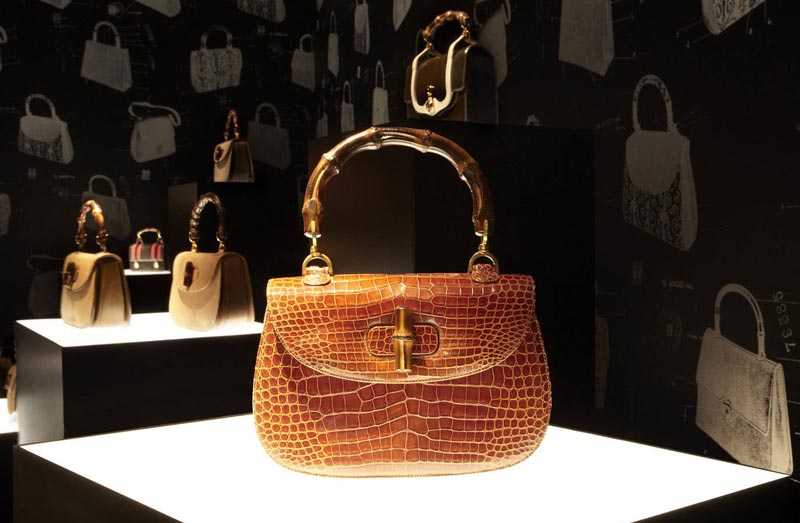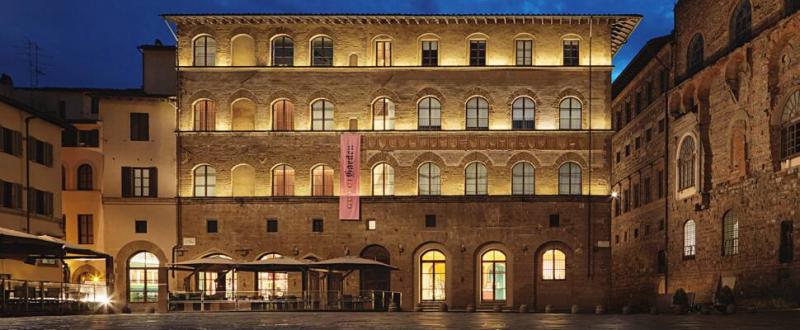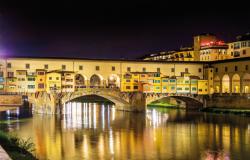Sometimes, the most rewarding surprises are found in a city’s ‘minor’ sights. Florence has plenty of world-famous sights everybody flocks to, and we understand why, but we also like to make the case for the lesser-known spots, which often reveal a lot about a place in original ways. That’s the case for these five little-known or little-visited museums that will give you a window into parts of Florence’s history (it’s not all about the Renaissance!).
This article is part of a series aimed at highlighting little-known museums, sites and cultural institutions in Italy’s most popular tourist destinations in an effort to shed light on all those places that are not on everyone’s ‘must-do’ list, but are actually worth discovering and can make one’s visit all the more enriching.
*See also Five Crowd-Free Museums in Rome.
SALVATORE FERRAGAMO MUSEUM
Located in the 13th-century Palazzo Spini Feroni, the Salvatore Ferragamo Museum is dedicated, as the name suggests, to the famous Italian designer Salvatore Ferragamo, who founded the company by the same name in Florence in 1927, starting with footwear only, and expanding over time to leather goods, clothing, accessories, and perfumes.
The museum was conceived by the Ferragamo family, who wanted to pay homage and highlight the role of the company’s founder in the history of Italian footwear and fashion.

In addition to the permanent collection, which tells the story of the brand through 10,000 (!) models of shoes created by Ferragamo from the 1920s until his death in 1960, the museum organizes temporary exhibitions and events. The exhibition also includes films, press cuttings, advertising materials, clothes and accessories from the 1950s to the present day.
Palazzo Spini Feroni is centrally located along via de’ Tornabuoni, at the corner with Piazza Santa Trinità.
https://www.ferragamo.com/museo/en/usa/
You can also take a virtual tour.
GUCCI MUSEUM
Another museum dedicated to an iconic fashion brand that originated in Florence is the Gucci Museum, located in the Antico Palazzo della Mercanzia on Piazza della Signoria, inaugurated in 2011 for the 90th anniversary of the brand’s creation.
Gucci was founded in Florence by Guccio Gucci in 1921 and has expanded to become the world’s second best-selling fashion brand after Louis Vuitton, with product lines that include handbags, ready-to-wear, shoes, accessories including jewelry and watches, makeup, fragrances, and home decoration. (Ownership of Gucci is no longer Italian).
The palace that hosts the museum, the historic Palazzo della Mercanzia, evokes the long tradition of Florentine craftsmanship, of which Gucci, originally a maker of luggage and leather goods, is an important part.

The museum’s permanent collection displays historical models of the maison, including trunks, bags, suitcases, accessories and clothes. It also hosts temporary exhibitions and features a shop and a restaurant by the award-winning chef Massimo Bottura, the Gucci Osteria.
Half of the museums’s proceeds are donated to the city of Florence for the restoration of works of art.
STEFANO BARDINI MUSEUM
It may be known as one of the ‘minor’ museums of Florence, but there’s nothing minor about it when you consider the collection it houses.
The Stefano Bardini Museum was donated to the city of Florence in 1922 by the prominent antiquarian Stefano Bardini, who amassed a large collection of works of art over the course of his life.
The museum houses an eclectic mix of more than 3,600 works, including paintings, sculptures, armor, musical instruments, ceramics, coins, medals and antique furniture from every era up to the 18th century, which Bardini himself organized in the rooms of the palace he acquired and also used for his work.

The collection even includes paintings by the likes of Donatello, Antonio del Pollaiolo, Tintoretto and Guercino, and majolica by Andrea della Robbia.
The museum is located in via de’ Renai at the corner with piazza de' Mozzi in the Oltrarno district, inside a Neo-Renaissance palace that was once the Church and convent of San Gregorio della Pace.
http://museicivicifiorentini.comune.fi.it/en/bardini/
HORNE MUSEUM
The Horne Museum is the recreation of a typical Florentine residence from the past: its rooms, furniture, ceramics, books, paintings and works of art recall the appearance and atmosphere of a Florentine home from between the 15th and 16th centuries.
It was created in 1911 by the English architect, collector and art historian Herbert Percy Horne, who bought Palazzo Corsi and decided to transform it into a Renaissance house, with the goal to find a home for his precious collection of drawings, prints, books and furnishings, which encompassed a period ranging from the 1200s to the 1600s.

[Photo credit: © Stefano Casati / Museo Horne]
The collection includes paintings by Simone Martini, Masaccio, Filippino Lippi, and the highlight is Giotto’s famous panel painting Santo Stefano, which is the logo of the museum. Horne willed his collections and the palace to the state, with the stipulation that it be made into a museum and foundation.
The Horne Museum is located on Via de’ Benci 6 in the historic center of Florence.
ANTICA OFFICINA PROFUMO DI SANTA MARIA NOVELLA MUSEUM
The Officina Profumo di Santa Maria Novella is considered the oldest pharmacy in Europe, active without interruption for almost four centuries.
The current shop dates back to 1612, when it was mainly a spice shop, which soon became renowned throughout Europe. But as early as 1381, the Dominican friars of Santa Maria Novella sold rose water as a disinfectant, used mainly in times of epidemics. The friars grew medicinal plants in an adjacent garden, distilled herbs and flowers, prepared essences, elixirs, ointments, and balms.

The ancient ‘spezieria’ is now a perfumery and herbalist shop located in a grand space, with antique decorations and furnishings. Products are still prepared following the ancient recipes.
The museum has been designed in what were once the production laboratories and displays the machines and tools used in the past, as well as glass, ancient ceramics, copper and bronze objects.




